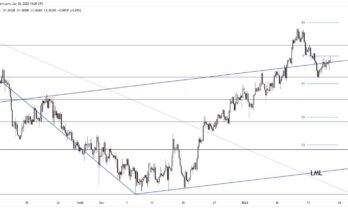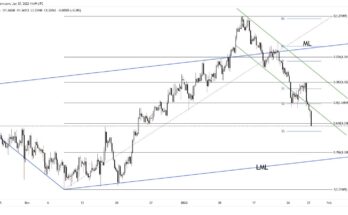The crisis in the Ukraine and the wider pressure being put upon Russia over the weekend is the main point of focus for markets at the start of the week. So far, the impact on FX markets has not been major or sustained, with EURUSD constrained to a 30 pip range for the most part at the end of last week. What are viewed as traditional safe haven currencies are not running away to the upside either, the Swissie having unwound initial gains against the euro and the yen also holding tight ranges on the crosses. For now it seems that FX is treating this as a more isolated incident with limited global implications, but there is nothing to say that this may change should more sanctions against Russia be announced this week.
The main points of interest on the data front for markets this week are towards the latter half. The New Zealand central bank is seen raising rates on Wednesday (to 3.50%), which has been largely priced in by the kiwi. Friday sees the release of both German IFO data together with GDP data for the UK. The latter will be crucial for sterling, which has outperformed over the past month on the growing expectation for an earlier than anticipated rise in interest rates from the Bank of England. We will also see the release of minutes to the July MPC meeting on Wednesday, where there is a growing risk that we see one member vote for higher rates. Over the past two months, we’ve seen the minutes reflect the fact that the decision to keep rates on hold has become more finely balanced for some. Sterling has lost some ground against the majors over the past few sessions (EURGBP above the lows made Thursday of last week), but the potential for further policy divergence remains a potentially powerful driver of the currency going forward, but the data and rhetoric will have move in favour of the currency.
Further reading:
EUR/USD & AUD/USD expected to resume downtrend – Elliott Wave Analysis
GBP/CHF Remains Buy On Dips



